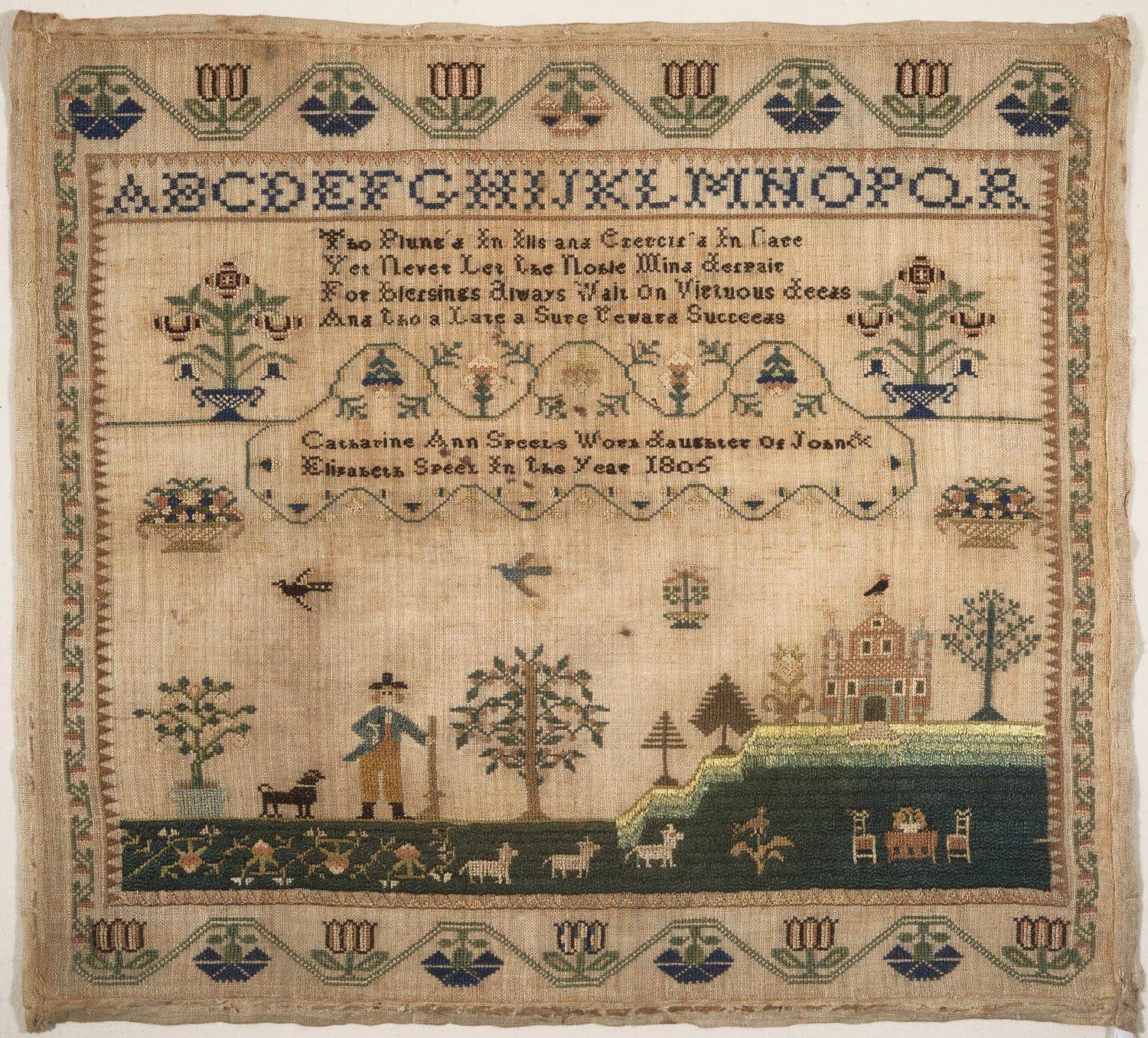All of the cross stich projects I've done did not fill in the background with a solid color. From what I've seen, thisThis is typical in embroidery -- the design itself is stitched in, and the backgroundbase fabric is leftused as the color/texture of the base fabricbackground. Not only is this faster and simpler for the crafter, it helps the design stand out from the background both texturally and visually.
Sampler by Catharine Ann Speel, photo from the Philadelphia Museum of Art
The only exception I can imagine to this is a pillow or other item that might be handled; if you want to have a smoother feel to the finished project, fill in every square (particularly since cross stich canvas is often quite stiff). Again, though, this isn't necessary -- the two pillows I made that included a cross stitch pattern were much more for display than cuddling, and therefore the background was left unstitched.
